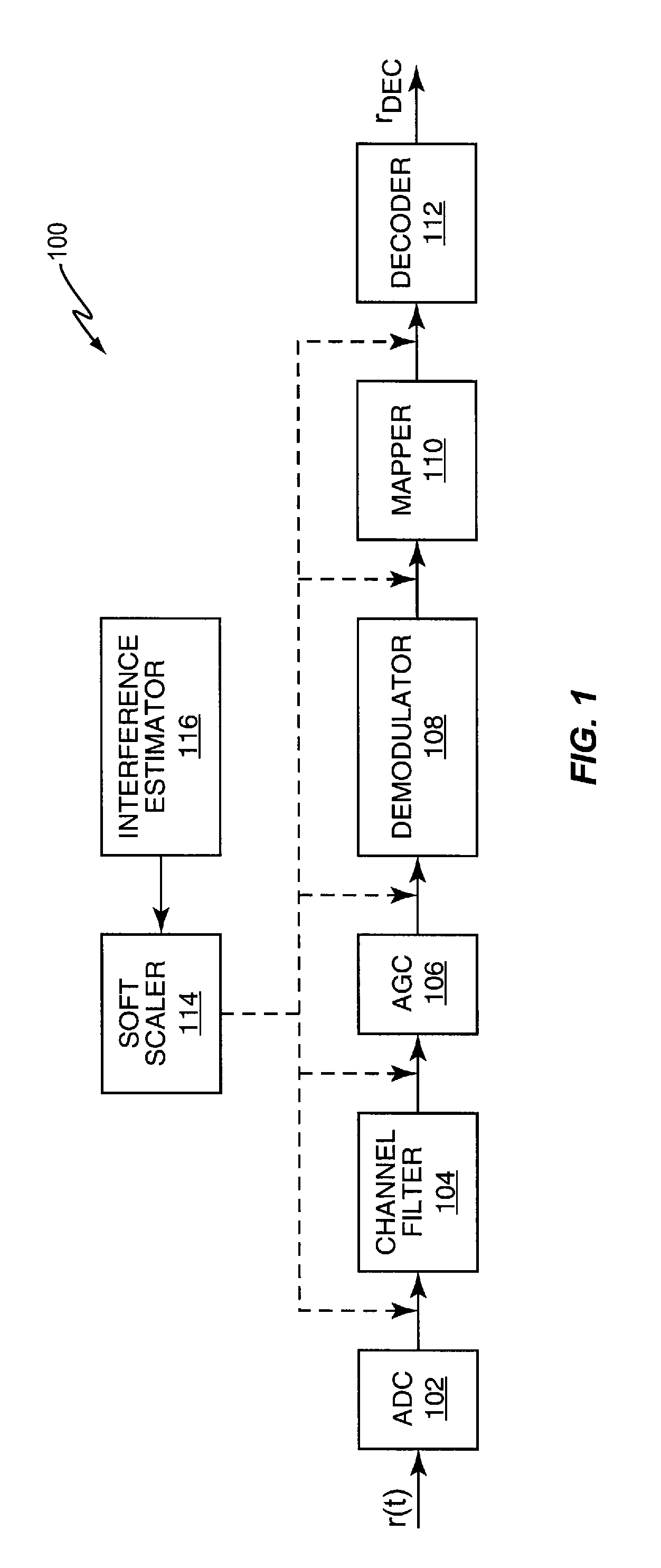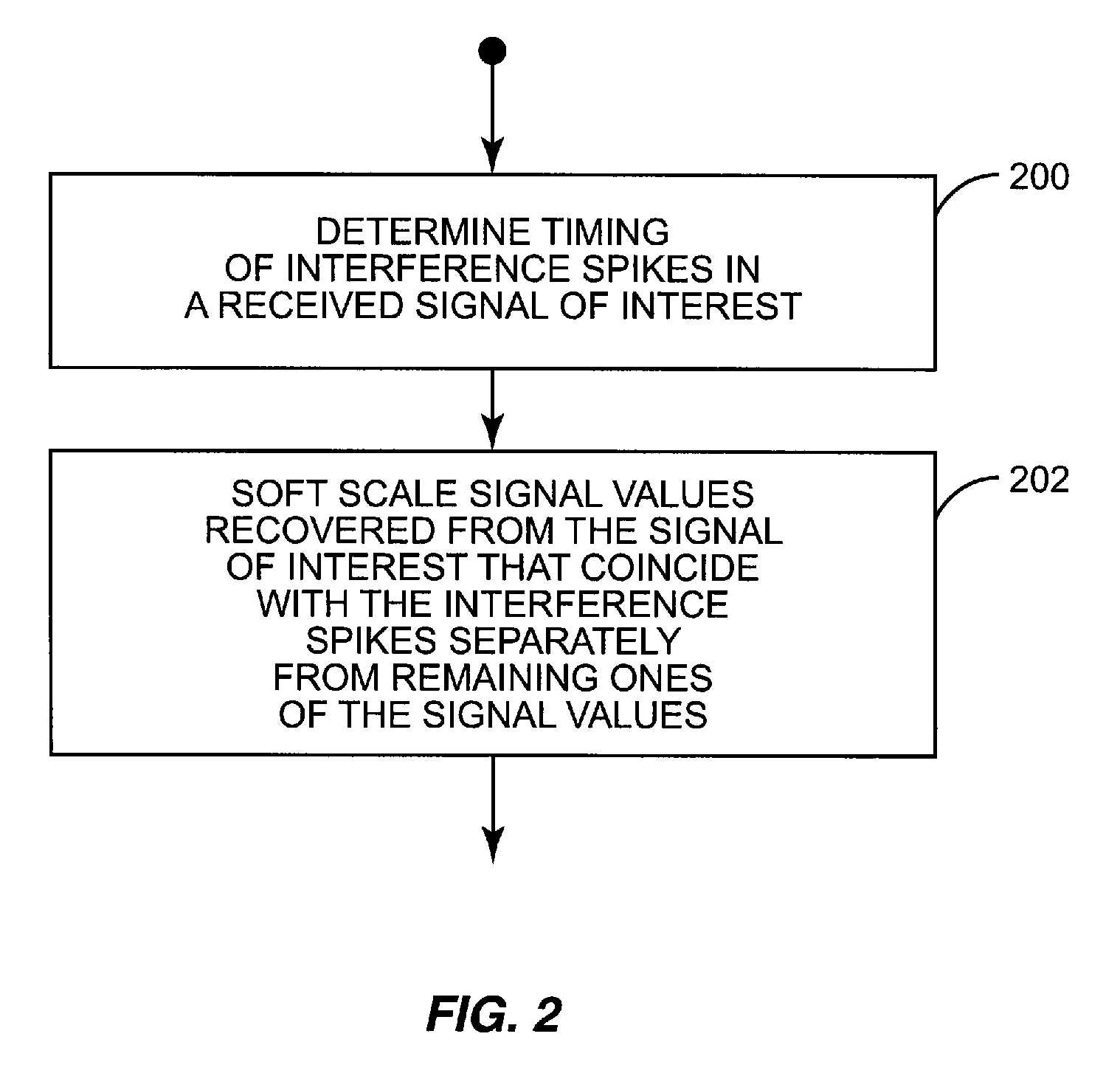Soft Scaling Method and Apparatus
a communication signal and soft scaling technology, applied in the direction of line-faults/interference reduction, amplitude demodulation, pulse technique, etc., can solve the problems of high interference spikes, unsynchronized uplink transmission, and particularly troublesome intra-cell interference, and achieve accurate tracking and accurate tracking
- Summary
- Abstract
- Description
- Claims
- Application Information
AI Technical Summary
Benefits of technology
Problems solved by technology
Method used
Image
Examples
Embodiment Construction
[0013]FIG. 1 illustrates an embodiment of a receiver 100 included in a wireless communication device such as a base station or a mobile device (not shown). According to this embodiment, the receiver 100 includes an analog-to-digital converter (ADC) 102, channel filter 104, automatic gain control (AGC) block 106, demodulator 108, symbol-to-bit mapper 110, decoder 112, soft scaler 114 and interference estimator 116. The receiver components 102-116 can be implemented in hardware, software or some combination thereof, e.g., using one or more baseband processors, DSPs (digital signal processor), ASICs (application-specific integrated circuit), etc. The receiver 100 recovers signal values from a received signal of interest r(t) and uses the soft scaler 114 to weight the signal values. The signal values can be weighted at any desirable point in the receiver chain as indicated by the dashed lines in FIG. 1. For example, the signal values can be weighted before being input to the channel fil...
PUM
 Login to View More
Login to View More Abstract
Description
Claims
Application Information
 Login to View More
Login to View More - R&D
- Intellectual Property
- Life Sciences
- Materials
- Tech Scout
- Unparalleled Data Quality
- Higher Quality Content
- 60% Fewer Hallucinations
Browse by: Latest US Patents, China's latest patents, Technical Efficacy Thesaurus, Application Domain, Technology Topic, Popular Technical Reports.
© 2025 PatSnap. All rights reserved.Legal|Privacy policy|Modern Slavery Act Transparency Statement|Sitemap|About US| Contact US: help@patsnap.com



